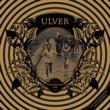
 Mare Smythii - Full Moon 194 - 07/03/12
Mare Smythii - Full Moon 194 - 07/03/12
Various Artists
From Ulver's songbook at Childhood's End
Let's take a closer look at the songs of Ulver's new album, shall we?
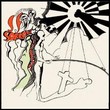 1. "Bracelets Of Fingers", The Pretty Things, off the album SF Sorrow, December 1968
1. "Bracelets Of Fingers", The Pretty Things, off the album SF Sorrow, December 1968
One of the best of British rock pioneers. The band arrived on the scene a little later than the Beatles and
the Stones and the members were even filthier and more long-haired than the Stones... It's a great song from
a great album, the Pretties' magnus opus, the very first rock opera around, most people can agree on, beating
the Who's Tommy by five months. It's the second song of the album, just after the birth of Sebastian F. Like
Pretty Things' single a year earlier, that was just finished before the recording of SF Sorrow started,
the magnificent psychedelic amalgam masterpiece "Defecting Grey", the album is filled with mighty mellotrons,
swirling sitars and blistering guitarwork throughout, only not as condensed as on the single. "Bracelets Of Fingers"
boasts a funny sitar break that is missed on Ulver's version. They allegedly used George Harrison's sitar that had
been left in Abbey Road's Studio 2 after a Beatles' session. I have witnessed one Pretty Things concert in my life.
I'm usually not that impressed by white blues-based guitarists. For Dick Taylor, Pretties' axeman, also the original
bassist of the Rolling Stones in the very early days (he left because he wasn't allowed to play guitar), I make an
exception and take a bow. He is the greatest!
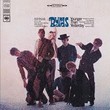 2. "Everybody's Been Burned", The Byrds, off Younger Than Yesterday, 6 February 1967
2. "Everybody's Been Burned", The Byrds, off Younger Than Yesterday, 6 February 1967
Only one band managed to mix Bob Dylan and the Beatles into an edible amalgam. Everybody knows their version
of "Mr. Tambourine Man" and the early psychedelic highlight "Eight Miles High" where they also mixed some
jazz influences into the recipe. Some of the songs of Younger Than Yesterday are better, by far the Byrds'
greatest album if you're not a hard-core country-rock fan and even though skilled guitarist and tunesmith
Gene Clarke had abandoned ship several months before the album was recorded. Here are Beatlesque pop songs
with something extra including Byrds' trademark the 12 string guitar sound, excursions into jazzier and
psychedelic terrain and even an early attempt at country-rock. Dylan's "My Back Pages", the only cover
version and where the album title is taken from, sounds as if Dylan himself sings the lead. And then
there is David Crosby's sore melancholic resigned love song "Everybody's Been Burned". Beautiful! If
Crosby had only written and recorded this song with the band, he still ought to keep his name in
rock'n'roll history. An excellent guitar solo, too!
Everybody has been burned before
Everybody knows the pain
Anyone in this place can tell you to your face
why you shouldn't try to love someone
Everybody knows it never works
Everybody knows and me
I know that door that shuts just before
you get to the dream you see
I know it all too well how to turn, how to run
how to hide behind a bitter wall of blue
But you die inside if you chose to hide
So I guess instead I'll love you
Ulver's version is less resigned and acoustic than the original, but still keeps the spirit of the song alive.
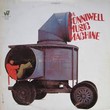 3. "The Trap", The Music Machine, off The Bonniwell Music Machine, 1967
3. "The Trap", The Music Machine, off The Bonniwell Music Machine, 1967
This is a quite merry folky tune with harpsichord that gives it a slight baroque touch.
The vocals are a bit too dramatic for my liking. Otherwise it runs into louder and calmer parts
and back again. Nice! Ulver's vocals fit better as a whole. Even nicer! The Music Machine was
centred around guitarist Sean Bonniwell who had played in a folk group earlier and moved to L.A.
when he was disillusioned with the folk movement. The band's debut single "Talk, Talk" was
a hit and the following two singles also made it to the national lists. After the debut album,
the band split. The second album was virtually a solo album and the name of the band of this album
is sometimes referred to as The Bonniwell Music Machine, too. Three of the other members later
teamed up with old pal Curt Boettcher (see track no. 14) and the early Beach Boys collaborator,
Byrds' producer etc. Gary Usher in Sagittarius, another little orchestra well worth checking out.
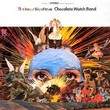 4. "In The Past", We The People, off the B-side of a single 1966/also by The Chocolate Watch Band, off The Inner Mystique, February 1968
4. "In The Past", We The People, off the B-side of a single 1966/also by The Chocolate Watch Band, off The Inner Mystique, February 1968
Ulver states that the starting point of their version is based on the recording by the Chocolate Watch Band,
but let's start with We The People. It's a nice melancholic pop song with a ditto piano. A guitar (?)
playing quick short notes in the mandolin or balalaika way gives it a folky touch that fits very well.
Memorable! The Chocolate Watch Band's version is not that different, but adds an organ instead of the piano
and some great psychedelic sound effects (sitars etc.) throughout the song. Ulver's recording includes the organ, none of
the effects and lots of bass that makes it heavier than the 60s versions.
We The People came from Orlando, Florida and released a handful of more or less psychedelic pop and rock singles
between 1966 and 69. They were all very popular in Florida and Tennessee, but none made it to the national hit lists.
The band called it a day in 1970, but received more attention from the 1980s onwards with the release of several compilation albums.
Chocolate Watch Band from San José, California was discovered and produced by Ed Cobb
along with at least one other San José combo the E-Types and not least the Standells from L.A. Cobb wrote songs
that he made his acts record. He finally hit the big times in 1981 when Soft Cell released a cover version of his
"Tained Love" that he had originally recorded with Gloria Jones in 1965. The Chocolate Watch Band started as a garage band influenced by British
acts like the Rolling Stones and Yardbirds but eventually turned more psychedelic. The band's first album No Way Out was a
collection of psychedelic punk songs and more freaky Eastern flavoured numbers. The band members did not play on
the latter. This direction was developed further on the second longplayer Inner Mystique. It included outtakes
from the first album and new tracks Ed Cobb recorded with studio musicians, exploring even further into
"The Dark Side Of The Mushroom". "In The Past" is one of the songs where the band members don't participate.
The band split before the album was released. Some of the original members were persuaded by Cobb to reform
for a final and disappointing album in 1969 before the eventual split. However, surviving members reformed for
a couple of shows in 1999 that resulted in more gigs and at least a studio and a live album.
And there's a brand new Watch Band album out one of these days, Revolutions Reinvented.
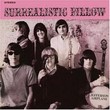 5. "Today", Jefferson Airplane, off Surrealistic Pillow, February 1967
5. "Today", Jefferson Airplane, off Surrealistic Pillow, February 1967
This is in the same vein as the Byrds' song, also a love song, although a bit more optimistic, and closer to
American folk and singer-songwriter-stuff than rock. It's very quiet with only acoustic guitars and flute,
quite different from the two big hits of Jefferson's most acknowledged album, "Somebody To Love" and
"White Rabbit", that Grace Slick brought along. The album was recorded at the end of October and first
weeks of November 1966 shortly after Grace Slick had joined the band. She only contributes backing vocals
on "Today" while Marty Balin takes the lead. Marty wrote it to try to meet Tony Bennett whom he admired and
was recording in the next door studio. He didn't succeed. Jerry Garcia of the Grateful Dead followed the band
from San Francisco to Los Angles as moral support for the recording sessions. He played guitar on a couple of
songs of the album, including "Today". Ulver's rendition is obviously less acoustic than the original, with keyboards and all, but still sounds remarkably similar.
 6. "Can You Travel In The Dark Alone", Gandalf, off Gandalf, 1968
6. "Can You Travel In The Dark Alone", Gandalf, off Gandalf, 1968
Ulver states it as an album from 1969 which is the official story. According to the expert Vernon Joynson
in his voluminous last edition of the encyclopaedia Fuzz Acid And Flowers it has to be 1968 because of the
colour of the Capitol label. JRR Tolkien's writings grew immensely popular with the Woodstock generation
and of course The Lord Of The Rings also inspired songs, albums and names of rock bands. A few years later
there was another (maybe one man) band about in New York called Gandald The Grey. Our Gandalf, established in
the same city, only released this self titled album. It mainly included cover versions. The track "Golden Earring"
that was also released as a single was a hit for Bing Crosby in 1948! "Can You Travel In The Dark Alone" was one of
a few written by the band members themselves. In spite of being from the eastern coast, it has a certain west coast
dreamy feel. There is a sitar involved here (at least it sounds like one), vibraphone and some droning instrument
that adds to the Asian touch. Ulver's approach is heavier, with an effect-laden organ in charge. A light swirling
interlude is thrown in to good effect. All in all Ulver's version sounds like a progressive heavy fuzz-organ monster
from around 1970.
 7. "I Had Too Much To Dream (Last Night)", The Electric Prunes, off single November 1966 and off the album The Electric Prunes: I Had Too Much To Dream (Last Night), April 1967
7. "I Had Too Much To Dream (Last Night)", The Electric Prunes, off single November 1966 and off the album The Electric Prunes: I Had Too Much To Dream (Last Night), April 1967
This is the Ulver version that sounds closest to the original, even with the electric buzz
(actually a vibrating guitar played backwards) at the start of the song. The original has some
effects on the vocals that remind of the Ulver vocal sound. The nice and effective backwards
guitar that graces most of the original song is missing on the 2012-version, though. The song is
a mixture of pop, garage and psychedelia. It even was quite a big hit in the US after being released
as a single in late 1966; it's probably the most well-known song of the entire Ulver collection.
The Prunes' producer Dave Hassinger didn't have the faith in the band members' songwriting abilities.
Instead he found this song written by the professional writers Annette Tucker (melody and song title)
and Nancie Mantz (lyrics); whom the band had got in touch with before they met Hassinger.
In fact Hassinger discovered the band playing at a party held for Annette's husband.
There are only a couple of songs of the band's debut album credited
to band members. Most of the others involve Mrs. Tucker along with Mantz (including the band's next
single hit "Get Me To The World On Time") or another of Annette's collaborators, Jill Jones.
The Electric Prunes was from the L.A. area and was allowed to play their own songs on the second LP Underground.
It's a fine collection of psychedelic rock with some excellent acid guitar, but didn't produce any hits.
The third longplayer, the conceptual Mass In F Minor, was something completely different, a lot more ambitious, combining Gregorian music
and psychedelic pop, sung in Latin! Producer Hassinger recruited David Axelrod as arranger and conductor
for the orchestral parts. During the process, some of the band members weren't considered clever enough musicians by the
producers and one by one they left the project. Instead Hassinger hired session musicians and a Canadian band
called the Collectors, for backing vocals. Apart from the opening track "Kyrie Eleison" (later used in the Easy Rider soundtrack)
only bassist Mark Tulin and drummer Michael 'Quint' Weakley contributed to some extent,
but the album was still released as Electric Prunes. The same goes for the fourth
album Release Of An Oath, also with spiritual over- and undertones, but without contributions from any of the band members at all.
The band had by then broken up, but Hassinger - who owned the rights - revitalised the band name for a final attempt in a very different direction called
Just Good Old Rock And Roll, with a completely new line-up. However, some of the original band members, encouraged and helped out
by Billy Corgan of the Smashing Pumpkins, reunited in 2002 and kept going
until Mark Tulin tragically died in a diving accident in 2011.
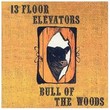 8. "Street Song", 13th Floor Elevators, off Bull Of The Woods 1969
8. "Street Song", 13th Floor Elevators, off Bull Of The Woods 1969
It's debateable if the 13th Floor Elevators mainly was a garage or a psychedelic band. I vote for the former,
but they most certainly were the first band to describe their music as psychedelic. The band's debut album from
late 1966 was called The Psychedelic Sounds Of The 13th Floor Elevators. Elevators' debut single "You're Gonna Miss Me"
early in 1966 was a minor national hit and the debut album fared well, too. From there it went downhill, mainly due to
drug abuse, not least LSD, and mental instability. "Street Song" is an unexpected choice, from the fourth and last
Elevators studio album (yes, the third Live was a studio album, too, with added cheers and applause) consisting of four
outtakes from the previous year and the rest by a band that guitarist Stacy Sutherland tried to avoid falling apart.
Roky Erickson, Austin, Texas' most legendary rock'n'roll-figure, front man and second guitarist of the band, wasn't even
present on the latter recordings, including "Street Song". It's very tempting to include an excerpt from Julian Cope's
lengthy review of the album at his interesting, entertaining and occasional controversial Head Heritage (Head to Head)
pages. A lot can be said about Cope, but he sure is cleverer to describe original music than anyone I can think of:
'"Street Song" is where the whole shebang really verges on falling apart at any moment: the guitar is distorted, the
rhythm acoustic just click-clacks down the railroad tracks and everything is echoed out to sheer fuck with no excuse
and no clarity whatsoever. Until... that heroic, tripping Morricone spaghetti Western theme that hijacks the song into
a fantastically trippy, lurching mini-epic, like Stacy and the boys perched upon horses on a Texas ridge overlooking
Rusk Mental Hospital, ready to swoop down and bust Roky out. And when they do, it's a clatter of hooves - sorry, drums - and
all hell busts loose in a Sutherland-led rave-up of unparallel proportions, even for The Elevators. It does find its way back
to the main theme of "Street Song," but how... I still can't figure out. The music is on such a high and wonderful flow for
most of the album you don't hear songs per se, but only feel them pass.'
Ulver's version has less western swing, is less chaotic and has more echoed vocals and guitar.
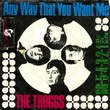 9. "66-5-4-3-2-1", The Troggs, originally a single B-side, December 1966
9. "66-5-4-3-2-1", The Troggs, originally a single B-side, December 1966
Ulver lists this as a song from 1968, but it was originally released a couple of years earlier. It was present
on the 1968 album collection Love Is All Around, though. Anyways, the Troggs was Britain's prime garage band.
By now they're most famous for their first and greatest hit "Wild Thing" and for a front man calling himself Presley.
No, not Elvis, we're talking about Andover, Hampshire's greatest rock hero Reg. "66-5-4-3-2-1" is a
quite-angry-young-man-with-tendencies-towards-gambling-fever-meets-girl garage-rocker that might have inspired
Johnny Rotten & co 10 years later. It was on the flip of "Any Way That You Want Me", a softer and more pop'ish
offering with a merry string quartet and all. The guitar towards the end is still angry, though. Ulver has
strengthened the dirty garage feel of "66-5-4-3-2-1".
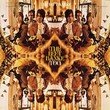 10. "Dark Is The Bark", The Left Banke, off single, summer 1968, and the album Left Banke Too, November 1968
10. "Dark Is The Bark", The Left Banke, off single, summer 1968, and the album Left Banke Too, November 1968
A nice soft and melancholic pop ballad with full orchestration, both strings and horns. Not quite as catchy
as the Left Banke's most famous song and greatest hit "Walk Away Renee", but not that far behind. The arrangement
and the horns in particular are occasionally a bit too pompous and dominant for my liking, but that is easy to forgive.
Along with "Soon There'll Be Thunder" (track 12) and "Velvet Sunsets" (track 13) probably the most unlikely pick of the
Ulver collection. Ulver's version is the most pompous song of Childhood's End, but luckily without the horns.
The Left Banke came from New York, and their music was labelled baroque-pop due to the heavy use of strings on their
recorded songs. There were lots of tensions within the band and they finally folded around the time the second album
Left Banke Too was released. Half the album consisted of songs off singles released in 1967 and 1968. A young chap
called Steve Tallarico contributed backing vocals to some of the tracks including "Dark Is The Bark". He later found
fame and fortune as a judge in American Idol after some
plastic surgery, changing his family name to Tyler and his first name to Steven.
Oh yes, there was something about a band named Aerosmith, too.
 11. "Magic Hollow", The Beau Brummels, off Triangle, 1967
11. "Magic Hollow", The Beau Brummels, off Triangle, 1967
The Beau Brummels of San Francisco followed a similar path as the Byrds of L.A. The band started as a beat and
folk group and had a couple of pop hits with their early singles in 1965, produced by Sly Stone, no less! The
Brummels never made it as big as the Byrds, though. Members dropped out and by 1967 the remaining trio had moved
into more psychedelic terrain. The following year saw them develop into country-rock before the band members went
their separate ways. Like a lot of other bands being covered here, they later reformed. Several renowned music
journalists including Richie Unterberger consider "Magic Hollow" to be a psychedelic classic, the highlight of the
Triangle album and "one of the most beautiful tunes in the entire Brummels canon". I don't know... The song is
filled with strings and the vocals are too soft and have too much unctuous vibrato for my liking. The harpsichord,
however, is played by our man Van Dyke Parks of the Beach Boys' Smile era. Anyhow, the song sounds closer to cheesy
listening than a psychedelic ballad if you ask me and Ulver's version works a lot better. Ulver's vocal effects fit
very well with the soft, slightly mystic feel of the song. Some great guitar playing and picking here, too, on both
acoustic and electric guitar. This is the song that Ulver really lifts to a higher level.
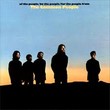 12. "Soon There'll Be Thunder", The Common People, off Of The People/By The People/For The People From The Common People, late 1969
12. "Soon There'll Be Thunder", The Common People, off Of The People/By The People/For The People From The Common People, late 1969
This is the opening song from the Common People's only album. It's a piece of languishing soft-pop-psychedelia,
filled with soaring strings and hoarse longing vocals. Miles away from what I'd consider Ulver terrain, but Ulver's
version with a nice fitting echoed guitar isn't that different. The band members originated from the outskirt of
Los Angeles and were discovered by Tim Hudson, manager of garage rock heroes the Seeds and the Lollipop Shoppe.
The band could be seen wearing white robes and Biblical staffs on stage at the time. Hudson secured a generous recording
contract with Capitol Records and hired David Axelrod (check track 7) as producer along with arranger/conductor
Sid Sharp, studio musicians and engineers that had worked with Love, Zappa, Beach Boys, Nat King Cole, Buffalo Springfield,
Charlie Parker and the Band to name but a few. Axelrod's wife was involved in a serious car accident and he had to leave
the project when the recordings were to start. The people at Capitol were worried, cut the support after only a few songs had
been recorded and the remaining were recorded in hurry with far simpler arrangements. The album was released at the
very end of the 1960s, as the hippie dream was fading away, but it was hardly given any distribution. Around the same time
drummer Gerald Robinett, brother of the group's main song writer and guitarist Joel "Denny" Robinett, drowned in a boat
accident and the band dissolved. Anyway, most of the songs of the album serve as great reminders of the
Common People; not least "Soon There'll Be Thunder". It might be heavy orchestrated soft-pop, but like the best of the
Beach Boys orchestrated excursions and Love's Forever Changes, it is not soft to the core. The substance is still there.
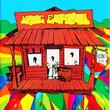 13. "Velvet Sunsets", The Music Emporium, off The Music Emporium, 1969
13. "Velvet Sunsets", The Music Emporium, off The Music Emporium, 1969
Here's yet another band from L.A., started by Bill Cosby. No not the TV family man. Our Bill used to be called Casey.
He was an ace accordion player, winning the United States accordion championship five years in a row and had released
four LPs of accordion music! After winning a Frank Sinatra sponsored competition in 1967 he enrolled as a music major
in the US Army. By then he searched for a new musical direction and discovered rock'n'roll through the Doors and Iron
Butterfly and changed his instrument to organ. He found drummer Dora Wahl (one of the few female drummers around at
the time in addition to Velvet's Maureen Tucker) living only two blocks away from him, bassist and vocalist Carolyn
Lee and eventually guitarist Dave Padwin. The quartet only played a handful of gigs. They recorded the band's
sole album during the cheapest studio hours, i.e. at night. The recordings were meant as a demo tape to sell to a record
company, secure a contract and then record a proper album. The man who bought the tape instead suggested a few adjustments
and released it, in a limited quantity of only 300 copies. The album varies between louder
songs inspired by the aforementioned bands and quiter numbers. The latter works best and don't reveal the cheap and
hurried recording circumstances that much. The music of "Velvet Sunsets" might best be characterised as acid folk with discreet guitars,
ditto organ and drums, harmony and somewhat sacral vocals with Carolyn's voice up front most of the time. She had
sung in a choir next to Karen Carpenter, later of Carpenters fame. Ulver manages to preserve the hushed feel, and making it
sound even more religious. The Music Emporium came to an abrupt end when Casey was drafted. But instead of going to Vietnam
he went to West Point to play accordion in combos at the United States Military Academy.
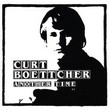 14. "Lament Of The Astral Cowboy", Curt Boettcher, recorded in 1973
14. "Lament Of The Astral Cowboy", Curt Boettcher, recorded in 1973
Here is the odd pick. A track recorded in 1973, four years later than the second youngest recorded song of the album.
As far as I know, it wasn't released on Boettcher's solo album of that year, only present on a couple of compilation
albums released after his death in 1987. Curt started his musical career in a folk-band called the Goldebriars that
also included the drummer Ron Edgar later of The Music Machine (track 3). Eventually, Curt established himself as
a producer, mainly of soft psychedelia and sophisticated folk with lots of vocal harmonies of the L.A. kind
(Beach Boys and the Association are among the most well-known). His own recordings have the same characteristics.
"Lament Of The Astral Cowboy" includes lots of echoed piano and a bit of reverbed vocals, not quite unlike the
Ulver sound, only lighter. The song is a bit melancholic and very dreamy. The vocal harmonies are the only Boettcher
characteristic missing. It doesn't feel out of place in this company. The same goes for Ulver's version that has an
echoed guitar instead of the piano.
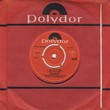 15. "I Can See The Light", Les Fleur De Lys, single A-side, September 1967
15. "I Can See The Light", Les Fleur De Lys, single A-side, September 1967
Les Fleur De Lys was one of numerous British groups that started as a beat/rhythm'n'blues-band in the first
half of the 1960s, released a few unsuccessful singles, turned psychedelic round 1967 and didn't quite know where
to move next before fading slowly away towards the end of the decade. In retrospect it's not hard to see that some
of the band's recorded output had deserved a better destiny. Their first two singles were produced by a very young
Jimmy Page, who also played guitar on the second one. "I Can See The Light" is one of the best songs of the band, a
slightly psychedelic ballad where the organ takes charge. Ulver has maintained that organ sound, at least at the
start of the song. A cello (and also a viola?) of the original adds to the melancholic mood along with a
yearning chorus. Les Fleur De Lys had several line-up changes. Some of the members later found more fame and
fortune in bands like Spencer Davies Group, Jefferson Airplane and King Crimson. Bassist Gordon Haskell who was
part of the three piece line-up that recorded "I Can See The Light" has fond memories of the band (taken from the
booklet of Les Fleur De Lys compilation Reflections released a few years back):
'Looking back it really was the happiest time in my life as everyone seemed to know "where it was at", which
isn't surprising as amongst our company we kept as friends and fellow club goers were Jimi Hendrix, Otis Redding,
Eddie Floyd, Booker T., Steve Cropper, Donald Dunn, Tim Hardin, Steve Stills, Jeff Beck, Eric Clapton, Sonny and Cher,
The Vanilla Fudge and The Average White Band to name those I can remember. Joining King Crimson after that was an enormous bore,
they were so bloody white and stiff and arrogant.'
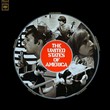 16. "Where Is Yesterday", The United States Of America, off The United States Of America, 6 March 1968
16. "Where Is Yesterday", The United States Of America, off The United States Of America, 6 March 1968
Another one album wonder. The United States Of America was formed by classical scholared Joseph Byrd who wanted to
combine electronic experimentation with what was going on in popular music in California at the time. So he quit
New York for L.A., studied acoustics, psychology and Indian composition at the UCLA and started the U.S. of A., the band, after
he had dropped out of university. The band's other asset was the voice of his ex-girlfriend Dorothy Moskowitz. The
instruments included primitive synthesizers, ring modulator, electric violin, an early version of fretless bass and
drums. There are very few traces of pop or rock in "Where Is Yesterday". Not so much electronics either, not as much
as could be expected at least. It starts as something similar to a monk chant but grows more profane after a while,
still with several voices in the centre. They are interspersed with short electronic excursions and the occasional
drums, especially towards the end. But still, it's the vocals that make the song. Ulver's arrangement is more comprehensive
with complete band instrumentation for a little while. The vocal achievements are not quite on level with the original,
but the will to experiment is as strong. By far the most experimental track of Childhood's End. Incidentally, this is not
the first time the U.S. of A., the band, is covered by Norwegians. Our friends of the Smell Of Incense gave a go at
"Coming Down" that was released on a single several years ago. A slightly expanded version of the recording
was also included on the Smelly's compilation A Curious Miscellany two years ago.
The United States Of America, the album,
received good critics, but sold poorly. The band ran into problems during the tour to support it (drugs and equipment failures)
and soon The United States Of America, the band, was no more.
...
I was only familiar with about half of the 16 songs before Ulver released Childhood's End. The investigation of them and
the other originals has been an interesting journey and given an urge to investigate even further into the catalogues
of the bands and artists involved, and some of their contemporaries, too. The more I listen to the 16 originals,
the better most of Ulver's selection seems. And Ulver makes the necessary corrections in the couple of songs not
quite up to par in original wrapping.
In addition to Vernon Joynson's mentioned guide to American garage, psychedelic and hippie rock Fuzz Acid
And Flowers, his ditto on the British scene The Tapestry Of Delights has been handy to find vital information
concerning the bands involved. The same goes for Shindig! Magazine, The Ptolemaic Terrascope magazine, CD booklets, good old
Wikipedia and YouTube.
PS! For those who can't get enough of Ulver's renditions, it might be an idea to seek out the band's Roadburn EP,
too, though it might be hard to find; it was only released in a limited edition of 500 copies.
It includes a version of the 13th Floor Elevator's "Reverberation (Doubt)" off the band's debut album
The Psychedelic Sounds Of. On the original recording the ultimate cult hero of the era, Roky Erickson, is present.
Copyright © 2012 JP 
|

 1. "Bracelets Of Fingers", The Pretty Things, off the album SF Sorrow, December 1968
1. "Bracelets Of Fingers", The Pretty Things, off the album SF Sorrow, December 1968 2. "Everybody's Been Burned", The Byrds, off Younger Than Yesterday, 6 February 1967
2. "Everybody's Been Burned", The Byrds, off Younger Than Yesterday, 6 February 1967 3. "The Trap", The Music Machine, off The Bonniwell Music Machine, 1967
3. "The Trap", The Music Machine, off The Bonniwell Music Machine, 1967 4. "In The Past", We The People, off the B-side of a single 1966/also by The Chocolate Watch Band, off The Inner Mystique, February 1968
4. "In The Past", We The People, off the B-side of a single 1966/also by The Chocolate Watch Band, off The Inner Mystique, February 1968 5. "Today", Jefferson Airplane, off Surrealistic Pillow, February 1967
5. "Today", Jefferson Airplane, off Surrealistic Pillow, February 1967 6. "Can You Travel In The Dark Alone", Gandalf, off Gandalf, 1968
6. "Can You Travel In The Dark Alone", Gandalf, off Gandalf, 1968 7. "I Had Too Much To Dream (Last Night)", The Electric Prunes, off single November 1966 and off the album The Electric Prunes: I Had Too Much To Dream (Last Night), April 1967
7. "I Had Too Much To Dream (Last Night)", The Electric Prunes, off single November 1966 and off the album The Electric Prunes: I Had Too Much To Dream (Last Night), April 1967 8. "Street Song", 13th Floor Elevators, off Bull Of The Woods 1969
8. "Street Song", 13th Floor Elevators, off Bull Of The Woods 1969 9. "66-5-4-3-2-1", The Troggs, originally a single B-side, December 1966
9. "66-5-4-3-2-1", The Troggs, originally a single B-side, December 1966 10. "Dark Is The Bark", The Left Banke, off single, summer 1968, and the album Left Banke Too, November 1968
10. "Dark Is The Bark", The Left Banke, off single, summer 1968, and the album Left Banke Too, November 1968 11. "Magic Hollow", The Beau Brummels, off Triangle, 1967
11. "Magic Hollow", The Beau Brummels, off Triangle, 1967 12. "Soon There'll Be Thunder", The Common People, off Of The People/By The People/For The People From The Common People, late 1969
12. "Soon There'll Be Thunder", The Common People, off Of The People/By The People/For The People From The Common People, late 1969 13. "Velvet Sunsets", The Music Emporium, off The Music Emporium, 1969
13. "Velvet Sunsets", The Music Emporium, off The Music Emporium, 1969 14. "Lament Of The Astral Cowboy", Curt Boettcher, recorded in 1973
14. "Lament Of The Astral Cowboy", Curt Boettcher, recorded in 1973 15. "I Can See The Light", Les Fleur De Lys, single A-side, September 1967
15. "I Can See The Light", Les Fleur De Lys, single A-side, September 1967 16. "Where Is Yesterday", The United States Of America, off The United States Of America, 6 March 1968
16. "Where Is Yesterday", The United States Of America, off The United States Of America, 6 March 1968